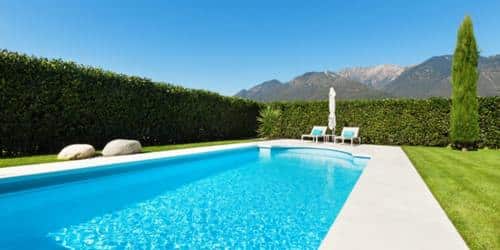An in-ground pool is one of the luxurious backyard’s most enticing and exciting features. There are many different types of in-ground pools, and it can be challenging to figure out which is the best. Luckily, there are ways to determine the best type for your backyard. Regarding in-ground pools, you can choose four main types of materials. These include concrete mixes, fiberglass, and vinyl. Each type of material has pros and cons that you’ll want to consider before making your final decision. This blog will discuss these different types and how to pick the best one.
#1. Gunite
A gunite/concrete swimming pool is a popular choice because it is durable. Gunite is very strong, so swimming pools made of it last a long time. Concrete pools are durable and long-lasting but expensive and difficult to repair if something goes wrong.
#2. Fiberglass
Fiberglass pools are available in almost every size and shape you can imagine. They are pre-made pools that you put in your yard all at once. Fiberglass pools, like gunite pools, have heaters and lights to allow night swimming. Fiberglass is a robust and lightweight material hardened with a special polyester resin. Fiberglass pools are less expensive than concrete and are easier to repair, but they may not last as long.
#3. Vinyl
A custom-made sheet of vinyl between the water and the pool’s structure. Vinyl pools are the least expensive option but also need the most maintenance.
How to Choose the Best Type of In-ground Pool
For the best In-ground pool, you need to consider the following factors:
#1. Get a Good Fit
Make sure the pool will fit in the space you have. Plunge pools are great for small outdoor spaces because they only take up about 8 to 10 square feet. A lap pool should be at least 60 feet long and 6 to 8 feet wide. Anything less than that will be frustrating for most lap swimmers.
#2. Think About the Location
One should consider where the sun will shine when choosing the pool location. The most advised is a spot on the property that receives full sun in the afternoon and late morning. One should also consider putting down hard-surfaced paving, a deck, or a well-kept grass lawn for sunbathing. A pool in the backyard surrounded by a garden brings humanity closer to nature.
#3. Pool Safety
A fence is a great way to increase safety around your pool area, and there are usually building requirements dictating how high the fence should be and what kind of self-closing gates should be used. Local building departments should provide information on specific safety requirements in your area. Most residential areas have restrictions on pool fencing with self-closing gates. These home security laws and restrictions work to keep children and pets from unsupervised access to the pool.
Before embarking on the pool-building journey, one should do extensive research. The best type of in-ground pool should provide home aesthetics and safety. It is important to remember that the installation and design of a pool play a vital role in the safety of your family and friends.






